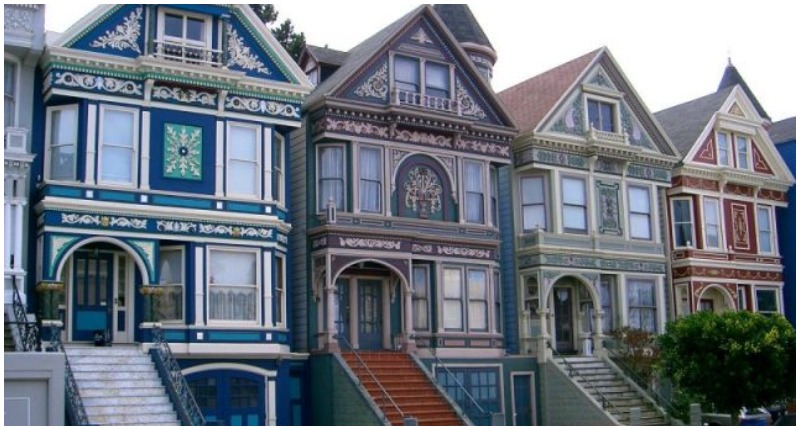Why do some old buildings look so scary and intimidating? That’s a question which springs to mind for anyone walking past a Victorian stately home.
Whether built during the reign of Queen Victoria herself (1837 – 1901) or taking inspiration from the style of the time, the passerby is confronted with the likes of Gothic gargoyles and eerie elemental symbols.
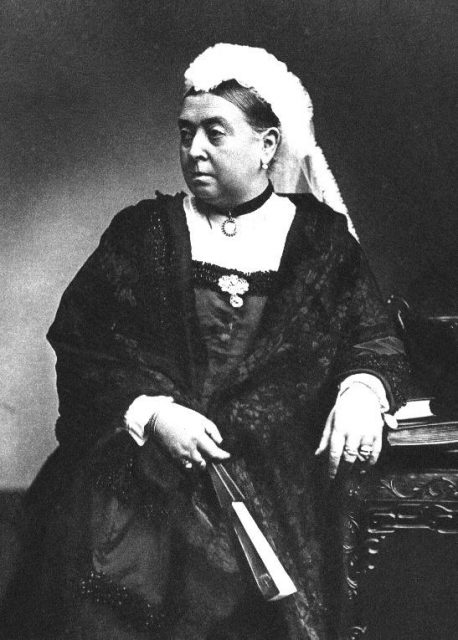
Are these elaborate sculptures a way of showing off, or do they have a deeper significance? The answer is both. For example, architectural experts have been taking a look at different areas of San Francisco as a sample and drawing some fascinating conclusions.
This city is far from the foggy streets of Victorian England, yet much of the period’s design found its way into the buildings of areas such as Pacific Heights.
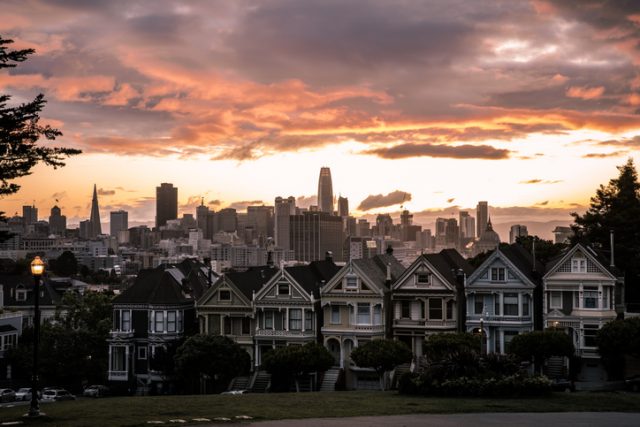
Writing in 2017, Architectural Digest noted that this approach endured into the 20th century. In addition to buildings erected during Victoria’s life, “many were constructed after the catastrophic 1906 earthquake and fire, which destroyed nearly 500 city blocks. In the aftermath of the tragedy, the spirit of the 19th century aesthetic prevailed.”
Examining these faded white facades can bring to life ancient legends, or represent the owner’s guiding principles. Overall it creates a powerful effect that can’t help but catch people’s attention…
Mythology
Images relating to Greek mythology can be found at locations such as the George W. Gibbs House, designed by Willis Polk. The Victorians ushered in aspects of the modern world but still saw value in these symbols.
Built in 1895, the Gibbs place was described in the 1983 book On the Edge of the World: Four Architects in San Francisco at the Turn of the Century by Richard Longstreth as “among the city’s earliest houses constructed entirely of stone and that almost no dwelling of comparable size matched the restraint of its exterior.”
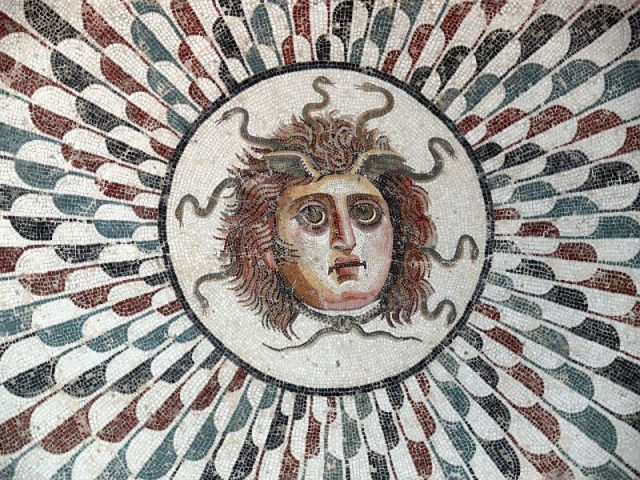
Longstreth noted that “In a metropolis of wood, the Gibbs house became an instant symbol of grandeur and permanency.”
One of its striking permanent features are the Medusa and Gorgon faces which look down on visitors from the Roman villa-style entrance. Medusa was decapitated by Perseus and her head — with its eyes and their ability to turn onlookers into stone — used as a weapon.
Architectural historian Caitlin Harvey, in a 2016 article for website 7×7, commented that “Medusa or Gorgon heads were often placed on doors or gates to repel evil or enemies. It is also a strong classical reference to great ancient Greek architecture, as Medusa appeared on a number of iconic temples.”
The Elements
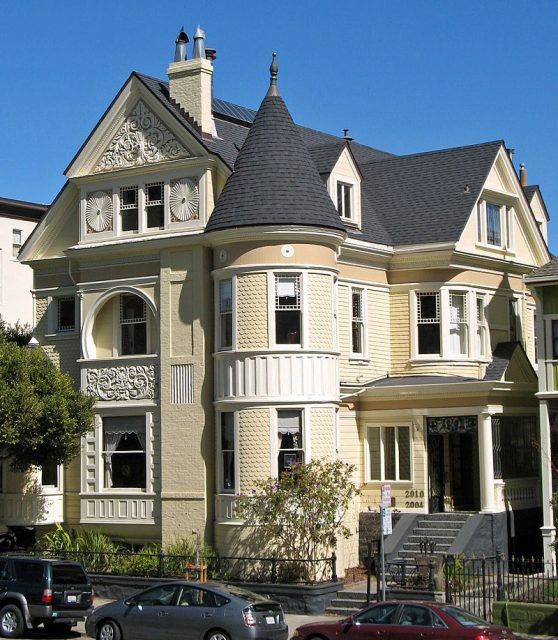
Also of interest is the C.A. Belden House, designed by Walter J. Mathews and built in 1889. For starters there’s the striking sculpture of a large Green Man face displayed prominently, reflecting a historical interest in nature.
But aside from that an elemental symbol reveals a sense of optimism — a sunburst can be seen by the upper window. Harvey refers to it as “a popular motif in the late 1800s. People who lived during that time considered it a golden age… But some historians think they represent the British Empire and the notion that the sun never set on the British Empire.”
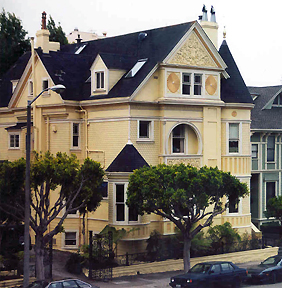
The house is a classic example of the Queen Anne style, which is a part of the Victorian era yet at the same time in a category of its own. The 18th century aesthetic (Queen Anne ruled between 1702 – 1714) had been revived a century later.
NoeHill.com wrote that it was “the flamboyant culmination of the building styles today grouped as Victorian, particularly in San Francisco where any residence built between the Gold Rush of 1849 and the 1906 Earthquake and Fire is commonly called Victorian.”
Related Video: 13 Victorian Vulgarities everyone should know
https://youtu.be/utw0IVJcGK0
Animals
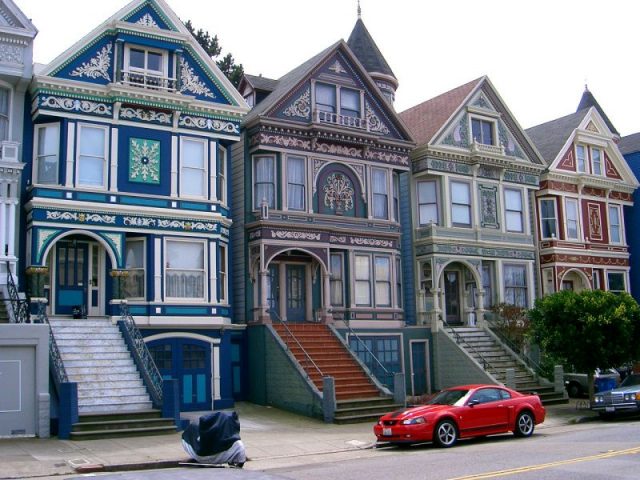
7×7.com mentioned that “larger and more costly homes had more custom details, while most middle-class homes ordered ornamentation from a catalog or pattern book.”
One popular and recurring theme was wildlife and the animal kingdom. On a domestic level, the iron sculpture of a dog is singled out. Even by today’s standards, they can be recognized as “symbols of loyalty”.
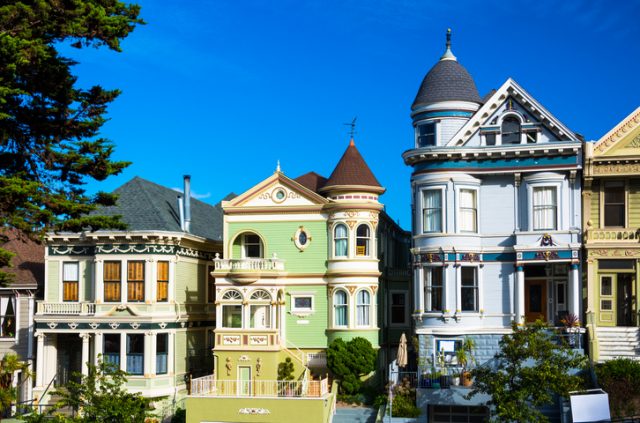
A more surprising sight could be a dolphin. Not the first creature thought of in relation to the Victorian period, but still an important one. They “symbolize swiftness, charity, diligence, and love — but she (Harvey) thinks it is popular in SF because of our coastal location”.
From beasts to birds. A swallow represented “hope, rebirth, and return (swallows are migratory birds that return to their cliff-side nests year after year).” And owls symbolize ““Wisdom, intelligence, protection, and vigilance.”
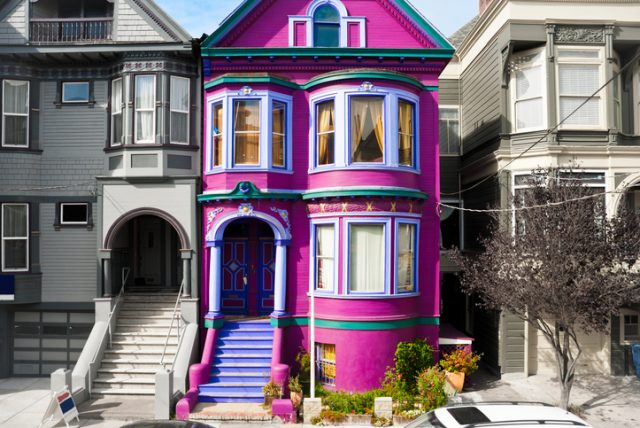
The emphasis was naturally on capturing the spirit of Victorian times. At the same time the architecture focused the old world through the prism of what was believed to be a new and exciting era.
Read another story from us: Art Deco House with Original Vintage Furnishings For Sale – Take a Tour
Those old and stony structures may look imposing. But by taking a closer look at how previous generations of individuals and families presented themselves through their houses, it doesn’t take long to reveal the human factor involved in their design.
